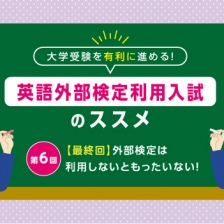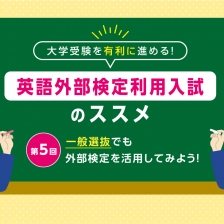今回も前回に引き続き、各私大・国公立大の多くで出題されるほとんどの英語(筆記)問題に共通した「シンプルで強力な解き方」について、英検の過去問などを使って解説していきます。
前回は、短文の語句空所補充問題と長文の語句空所補充問題を素早く簡単に解く方法を解説しました。それらを踏まえて、次に長文の内容一致選択問題も解いていきましょう。
よく「速読の秘訣は?」と聞かれますが、私は「第一段落、特に最初の方をじっくり読むこと」と答えることにしています。第一段落では「文章全体のテーマと概要説明」が述べられているからです。
こうした「大枠と流れ」が分かれば、内容に興味をもって予測しながら文章を自然に読み進めることができ、「長文を読むストレス」がぐっと減ります。
ここでは、「速く解くコツ」も併せて、実際に私自身が長文問題を解くときによく使う方法で解いていきます。
Ⅲ. 長文の内容一致選択問題
Read each passage and choose the best answer from among the four choices for each question.
New York City vs. the Car
Over the years, concerns about heavy traffic and the effect of cars on air quality have led New York City officials to make various attempts to reduce traffic on the island of Manhattan. The first was a 1971 proposal by then mayor John Lindsay to ban automobiles from entering a crowded area of Manhattan's business district during the daytime. The plan, promoted as a solution to the air pollution problem, was widely applauded by citizens. Unfortunately, a recession made local businesses worry the no-car zone would keep away potential customers, so the proposal was defeated.
In 1973, Lindsay again attempted to reduce traffic through a strategy in which drivers had to pay tolls for using any of the bridges connecting to Manhattan's business district. The federal government was also involved, as Lindsay's plan was approved as part of national legislation to improve air quality. After Lindsay's term ended, however, the next mayor opposed the plan and began battling the federal government over the issue. Eventually, instead of putting the original plan into place, the city was allowed to meet the national air-quality law's requirements by expanding environmentally friendly public transportation services. As a result, some bridges into Manhattan remained toll-free.
A proposal called Move NY, submitted in 2016, recommends a "congestion pricing" plan that would charge drivers to use currently free Manhattan bridges while lowering tolls on bridges in less busy areas outside Manhattan's business district. Though this would increase costs for people driving to the business district, the money would be invested in public transportation, making subways and buses a more attractive option and potentially reducing road congestion. Because there would be tolls on all of Manhattan's bridges, it would also discourage people from driving far out of their way to use currently free bridges to the business district―a common practice that adds to the traffic problem. If passed, Move NY could be the traffic solution the city has been seeking.
(32)
Why was the 1971 plan to ban cars from entering Manhattan's business district never put into effect?
1 Although officials claimed it would reduce air pollution, it had little effect when tested in other neighborhoods.
2 It only covered a limited area, so critics pointed out it would fail to reduce traffic in Manhattan as a whole.
3 Although it was generally popular, there were concerns it would have a negative economic effect on the area.
4 The mayor stopped promoting it because citizens complained it would force them to shop at inconvenient times.
(33)
How did the national air-quality law affect New York City's traffic policies?
1 It made it possible for the city to replace the bridge toll plan with another method of reducing air pollution.
2 It resulted in the reelection of the mayor who had supported the law when it was first passed.
3 It made it cheaper for commuters to take public transportation than to drive over a bridge into Manhattan.
4 It caused legal battles that finally forced the city to remove existing tolls on bridges into Manhattan.
(34)
What is one advantage of the Move NY plan?
1 Changing the tolls on bridges so they are based on the total distance driven would discourage people from driving.
2 Having tolls on all of Manhattan's bridges would help to prevent people from taking indirect routes.
3 Replacing some roads with public transportation services would enable the city to make a larger income.
4 Making Manhattan's less crowded bridges free would reduce traffic in the business district.
(英検2018年度 第1回検定 準1級 大問3より)
実際には設問文だけを先に読むこと(選択肢は見ない)もありますが、最も汎用性が高いのは以下の方法です。ただし、後でも触れますが、1~2段落を読んで少し疲れたなと感じたら、次の設問文(短いのでストレスが軽い)を読んで、そこから次の段落で書かれている新しい情報を得ておくと、本文も読みやすく、読みたてで解答できるので正答率も上がり、一石二鳥です。
それでは、まずオーソドックスな方法で最初の問題にあたってみましょう。
①第1段落をしっかり読んで、テーマと概要を把握する。
②設問の主旨を正確に把握し、
③本文の該当箇所(設問に対応する大体の場所)を特定する。
④本文の該当箇所と選択肢の意味が語彙レベルで一致しているか、「照合」する。
では、実際にやってみましょう。
<第1段落>
Over the years, concerns about heavy traffic and the effect of cars on air quality have led New York City officials to make various attempts to reduce traffic on the island of Manhattan. The first was a 1971 proposal by then mayor John Lindsay to ban automobiles from entering a crowded area of Manhattan's business district during the daytime. The plan, promoted as a solution to the air pollution problem, was widely applauded by citizens. Unfortunately, a recession made local businesses worry the no-car zone would keep away potential customers, so the proposal was defeated.
(32)
Why was the 1971 plan to ban cars from entering Manhattan's business district never put into effect?
1 Although officials claimed it would reduce air pollution, it had little effect when tested in other neighborhoods.
2 It only covered a limited area, so critics pointed out it would fail to reduce traffic in Manhattan as a whole.
3 Although it was generally popular, there were concerns it would have a negative economic effect on the area.
4 The mayor stopped promoting it because citizens complained it would force them to shop at inconvenient times.
設問 :Why ... the 1971 plan ... never put into effect
本文 :recession →local business worry =keep away potential customers
so, → the proposal was defeated
正解3: Although ... popular, ... concerns ... it (=the 1971 plan) would have a negative effect.
上記のように本文のworryと選択肢の concerns、同keep away potential customersとwould have a negative effect が語彙上の一致を伴う形で内容が一致しているのが分かりますね。
このように、本文の該当箇所と選択肢の該当箇所を語彙ベースで「照合」することで客観的に「一致」が確認できます。解答者の解釈によって正解が変わる余地をなくするために、語彙ベースでの一致という物理的・客観的根拠を正解の選択肢だけに用いるのが確立した作問方法です。
次の問題からは少し簡単に見てみましょう。
問(32)では、上記で説明した①~④の手順を追って正解を確定しました。つまり、この段階では、まだ第1段落して読み終えていません。ここで私がお勧めするのは、第2段落を読む前に、次の設問を読む、ということです。この短い設問文の中に次の段落で詳述される内容のエッセンスとなる「新情報」(ここで初めて言及される事柄)が含まれているため、設問の理解と同時に、これから読む段落の大枠が分かるという大きなメリットがあるからです。
(33)
How did 【A】the national air-quality law affect 【B】New York City's traffic policies?
→【A】が【B】にどんな影響を与えたか。
<第2段落第4文>
instead of putting the original plan into place, =原案廃止
the city was allowed to meet the national air-quality law's requirements
可能になった national air-quality law の必要条件を満たす(基準クリア→新政策手段導入)
by expanding environmentally friendly public transportation services.
*by+手段(政策手段)=環境に優しい公共交通サービスの拡大によって
<正解>
1 It made it possible for the city to
It = the national air-quality lawで可能になった
replace the bridge toll plan
= the original plan
with another method of
= expanding.
reducing air pollution.
= environmental friendly
*それぞれ同義語や具体→抽象などの言い換えによる語彙上の一致箇所を照合する。
<不正解>
2 It resulted in the reelection of the mayor who had supported the law when it was first passed.
3 It made it cheaper for commuters to take public transportation than to drive over a bridge into Manhattan.
4 It caused legal battles that finally forced the city to remove existing tolls on bridges into Manhattan.
*2~4 主語It(=the national air-quality law)の行為/影響ではないことが述べられている。
大体1~2段落くらい読むと、少し「読み疲れ」を感じますよね。そこで設問に目を移して気分を変えながら「新情報」を獲得して、次の第3段落を読んで「該当箇所」と「照合箇所」を探しましょう。
(34)
What is one advantage of the Move NY plan?
第1文
... Move NY, ... recommends a “congestion pricing”
= charge drivers to use currently free Manhattan's bridges
…手段の段階(利益はこの後)
第3文
Because there would be tolls on all of Manhattan's bridges,
全ての橋に通行税 …手段 【原因】
it would also discourage people from driving far out of their way
…利益 【結果】
to use currently free bridges to the business district
現在無料の橋まで遠回りしなくなる
<正解>
2 Having tolls on all of Manhattan's bridges
全ての橋に通行税 …手段 【原因】
would help to prevent people from taking indirect routes.
間接的なルートを取らなくなる …利益 【結果】
*このように、主に第3文を見れば、選択肢2との「照合箇所」が見つかりますね。
<不正解>
1 Changing the tolls on bridges so they are based on the total distance driven would iscourage people from driving.
*ここまでは言っていない
3 Replacing some roads with public transportation services would enable the city to make a larger income.
*あくまで副産物であり、主目的・主たる効果ではない
4 Making Manhattan's less crowded bridges free would reduce traffic in the business district.
*toll on all Manhattan’s bridgesと正反対
それでは、長文の内容一致選択問題の解き方について、もう一度整理しておきましょう。
①第1段落をしっかり読んで、テーマと概要を把握する。
(第1段落は概要を抽象的に説明→次段落以降で具体的に説明)
(各段落内でも、基本的に「抽象→具体」の流れ)
②設問の主旨を正確に把握する。
③本文の該当箇所(設問に対応する大体の場所)を特定する。
④本文の該当箇所と選択肢の意味が語彙レベルで一致しているか、「照合」する。
→その際、「因果関係」、「抽象と具体」の関係など、論理的関係とそれらを使った言い換えに注意する。
⑤長文を全て読み終えてから設問に当たるのではなく、少し読み疲れたら、設問を読んで次に書かれるテーマや内容に関する「新情報」を獲得する。
⑥設問から得た「新情報」と設問の主旨を踏まえて、次の段落を読む。
⑦上記③,④を繰り返し、素早く正解を見つける。
次回は、受験生の皆さんが苦労することの多い記述問題のコツを解説していきます。
おすすめ記事
-

2024/09/13
- 第6回(最終回) 外部検定は利用しないともったいない!
- これまで5回にわたって英語や漢字、数学などの外部検定利用入試についてお伝えしてきましたが、いよいよ最終回です。これまでチェックしてきたポイントをもう一度振り返りながら、外部検定を活用するメリットをまとめてみます。
大学受験を有利に進める!英語外部検定利用入試のススメ
-

2024/08/14
- 【第5回】一般選抜でも外部検定を活用してみよう!
- 前回は、英検®について詳しくチェックしたほか、最近注目の検定にも触れました。この時期は、総合型選抜・学校推薦型選抜の準備が終わって、あとは出願と試験を受けるだけという人も多いのでは? でも、もしものことを考えて、今から一般選抜も準備しておいた方が安心です。今回は一般選抜について外部検定の活用も含めて詳しく見ていきましょう。
大学受験を有利に進める!英語外部検定利用入試のススメ
-

2024/07/12
- 【第4回】英検®深掘り+注目の検定もチェック!
- 第3回記事では、英語外部検定をはじめとする各種検定のオススメをご紹介しました。なかでも「英検®」の準2級・2級が狙い目とお伝えしました。今回はさらにこの「英検®」について深掘りしていきます。加えて、最近注目の英語外部検定であるTEAP®やIELTS ™、コンピューターを使った検定「漢検CBT」についても見ていきましょう。
大学受験を有利に進める!英語外部検定利用入試のススメ

